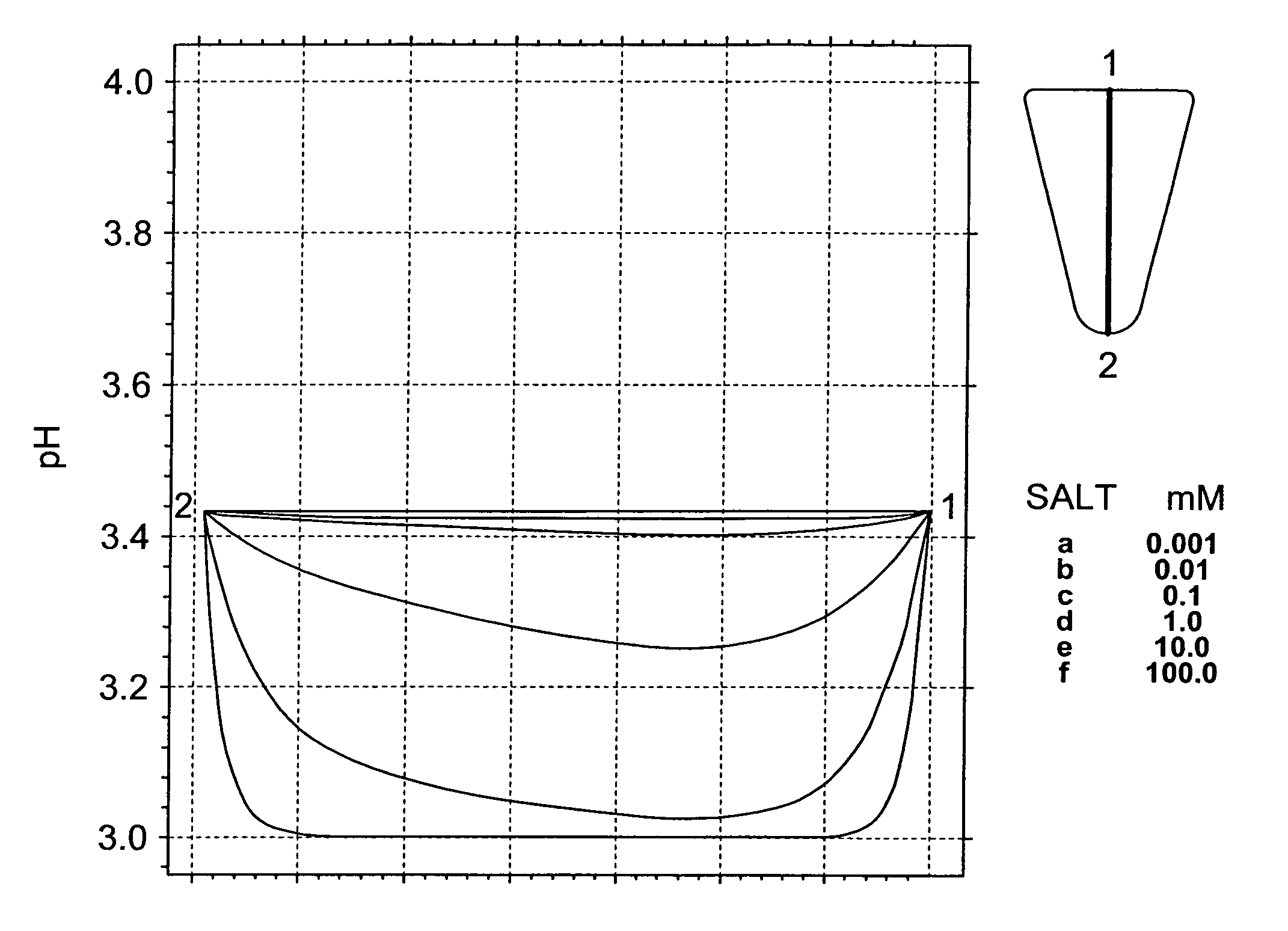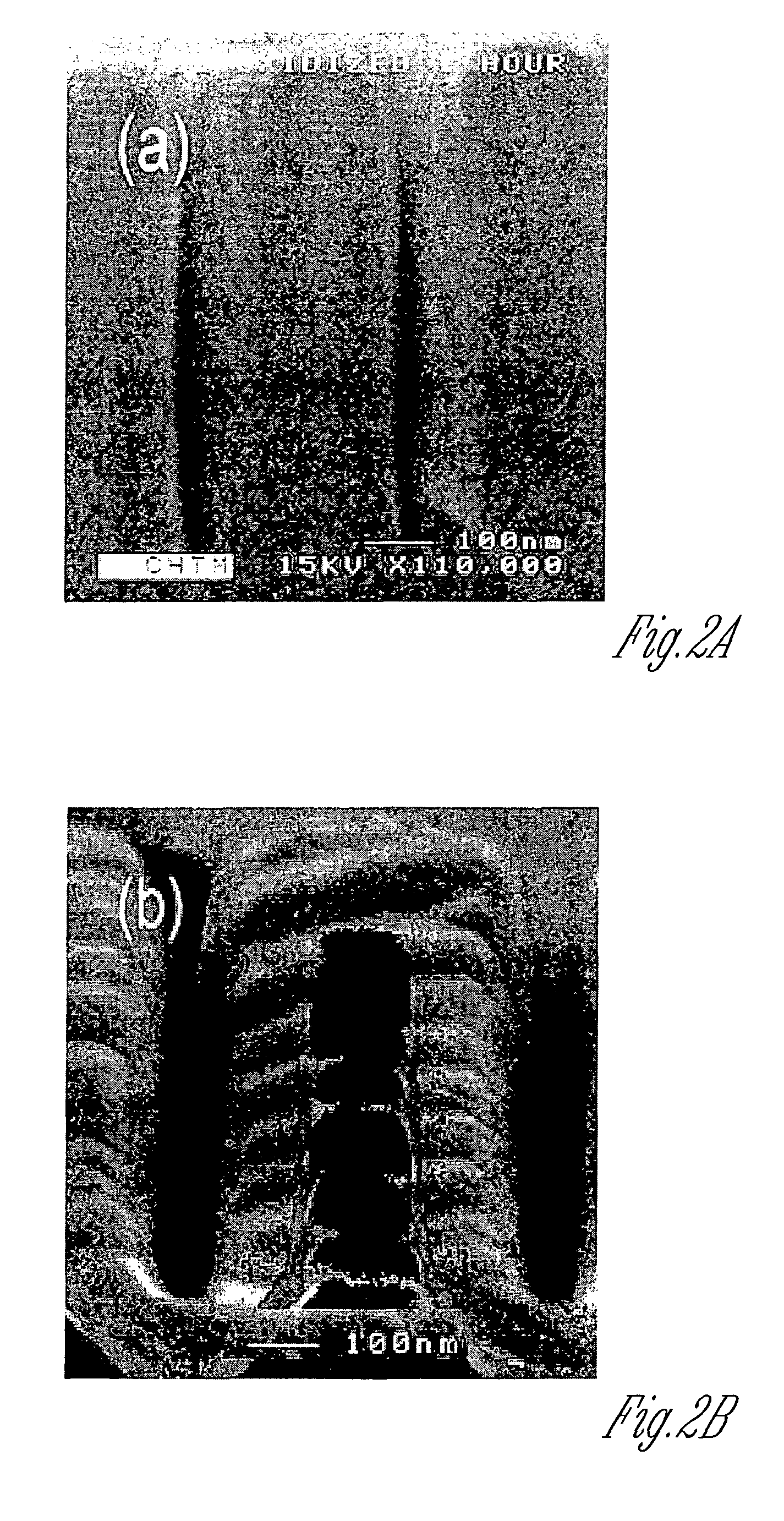Nanofluidics for bioseparation and analysis
- Summary
- Abstract
- Description
- Claims
- Application Information
AI Technical Summary
Benefits of technology
Problems solved by technology
Method used
Image
Examples
example 1
Detection of Biomolecules in Nanochannels
[0125]Fluorescence Microscopy (FS): Some methods typically used to probe fluid dynamics in macroscopic and microscopic channels may have limited application in the investigation of electrokinetically driven flows in nanochannels. For example, a tool that is typically used in measuring flow profiles in conduits, velocimetry, may not be used for far field imaging in the present devices because the characteristic width of the nanochannels, in which non-plug-like electro-osmotic flow is anticipated, is below the diffraction limit. Near field imaging techniques may be used to obtain information on velocity distributions using fluorescent tracers, but some re-engineering of the fabrication steps and chip architecture may be needed. For the solutes and solutions of interest here (aqueous solutions of dyes, biomolecules and proteins), such adaptations would be of limited utility because dispersion in the nanochannels will typically occur by diffusion...
example 2
Probing Protein Structure and Orientation in Nanochannels
[0134]This prophetic Example focuses on how the unique characteristics of nanochannels influence the structure and orientation of protein molecules as well as their biofunctional activities. That is, how to measure the effects on proteins of nanochannel geometry, double layer overlap, pH modulation, “gate” potential for the field effect transistor (FET) analogue, and externally applied electric field for electrophoresis. In response to these perturbations, experiments may be performed to determine whether:[0135]the protein molecules assume a preferred orientation,[0136]the protein molecules remain native or unfold (denature),[0137]the protein molecules reversibly or irreversibly adsorb on the channel walls,[0138]the protein molecules indiscriminately or selectively adsorb on the functionalized channel walls, and[0139]the biomolecular complexes bind or dissociate in response to a “gate” voltage.
The investigation will also answe...
example 3
Electrokinetic Measurements in Nanochannels
[0145]Fluorescent Dye Probes: Commercially available pH-sensitive, fluorescent dyes such as fluorescein and its derivatives, e.g., SNARFs or BCECFs from Molecular Probes, can be used as probes to measure the extent of the pH shift in nanochannels. The experiments themselves are relatively straightforward: a dye is selected which has the same charge sign as the channel wall (to minimize interference from surface adsorption) and a buffer is selected with a pH in or near the middle of the dye's peak transition range. The dye is then excited at an appropriate wavelength, its emission spectrum recorded and the pH is determined as a ratio of emission spectra peak wavelengths or as a peak shift. In the nanochannel, the pH shift as a function of ionic strength will be tested by varying the amount of neutral salt, NaCl, in the buffer. The associated control experiment is a pH measurement at high salt, e.g., >100 mM NaCl. This same approach can be us...
PUM
| Property | Measurement | Unit |
|---|---|---|
| Time | aaaaa | aaaaa |
| Thickness | aaaaa | aaaaa |
| Length | aaaaa | aaaaa |
Abstract
Description
Claims
Application Information
 Login to view more
Login to view more - R&D Engineer
- R&D Manager
- IP Professional
- Industry Leading Data Capabilities
- Powerful AI technology
- Patent DNA Extraction
Browse by: Latest US Patents, China's latest patents, Technical Efficacy Thesaurus, Application Domain, Technology Topic.
© 2024 PatSnap. All rights reserved.Legal|Privacy policy|Modern Slavery Act Transparency Statement|Sitemap



